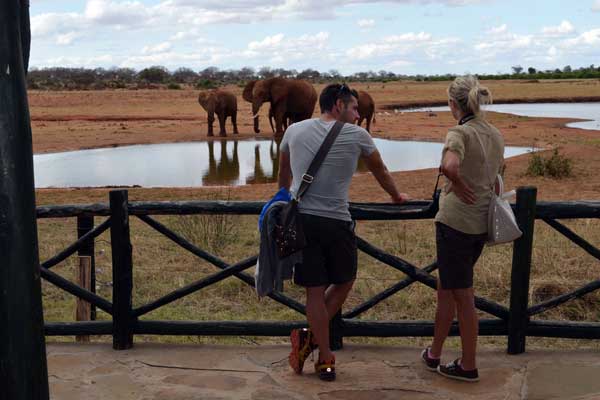Puerto Vallarta, Jal.- For many years, drug cartel killings in Mexico dominated the news.
Gruesome, unthinkably barbaric killings left indelible images in the minds of would-be travellers who decided to go elsewhere — somewhere safer.
Of course, the government fought back, often parading their prized human trophies in front of cameras once they had captured the bad guys.
But this only perpetuated the image of violence and insecurity.
When it came to foreigners and their impressions of Mexico, their experiences divided along the line of those who had been to Mexico recently and regularly, versus those who only “knew” Mexico through the scary media coverage.
NEGATIVE PRESS
Yet Mexico could not merely wish away the negative press; if drug war killings leave torched bodies hanging from bridges, or leave sacks of decapitated heads, that will be news, and news that will give nightmares to parents of families looking for a vacation destination.
What the Mexico government changed, when it came to media and country branding, was nothing short of morphing a scary cartoon into a sophisticated cubist painting.
In the absence of any other narratives, the drug war narrative took the spotlight every day. New narratives — credible ones — needed to be created to reveal these intriguing, multi-faceted aspects of Mexico that were not being talked about.
If Mexico merely depended on beautiful, new tourism campaigns, prospective foreign visitors would have experienced a severe cognitive dissonance between what they hear and read in the news versus the claimed beauty and safety in an ad campaign. In a head-to-head war like that, news usually wins.
So a comprehensive plan had to be enacted that would be rooted in credibility while not dismissing fears.
While neither the media, nor any advertising or public relations agencies should seek to bury the bad news, it can recede to the background when fresh, compelling narratives are crafted.
In the case of Mexico, this meant organising the storytelling along thematic lines to engage different interests of different audiences.
WORLD HERITAGE CUISINES
For example, gourmet travellers had no idea that Mexico has one of only two World Heritage Cuisines (can you guess the other one?).
Or that Mexico has more World Heritage Sites than any other country. No one knew that Mexico had made great strides into environmentally-sensitive and sustainable tourism.
Few knew that Mexico has a very powerful, educated, young demographic that is propelling the country into a new “BRIC” status.
In fact, Mexico often graduates more engineers than the United States does. And because of that, among other factors, Mexico became a magnet for moving high-tech specialised business there for giant multinationals.
It was no longer the sweat shop to the south.
When it came to the split image of Mexico held by people in the United States, two separate strategies emerged.
First, Mexico actually had to embark on a geography teaching tour in the US.
Officials went on local and national TV and newspapers asking questions like this: “If there was a shooting in Los Angeles, would you cancel your family vacation in Orlando, Florida?” (Of course, no one would because the distance between the two is 2,504 miles).
This simple illustration helped Americans understand that while the violence in Mexico was real, it was nowhere near where they would be visiting.
Next, the Mexico government worked to get the US State Department to revise its warnings from generic, country-wide warnings to very specific state and city localities.
MARKED DIFFERENCE
If you compare the travel warnings today from the US State Department on Mexico versus Kenya, you will see the marked difference.
When it came to veteran US visitors to Mexico, the repeat visit rate was very high.
So rather than use an official government voice or its proxy through a tourism campaign, Mexico leveraged the peer-to-peer value of social media, encouraging American bloggers and tourists who knew and loved Mexico to tell the prospective travellers not to fear Mexico.
In a cynical, social media world, the official voice may never be believed or may even backfire, while hearing from fellow parents talk about their own repeated visits without fear for their safety engenders credibility and allays fears.
Tourism and destination branding and marketing today should reverse the old school marketing approaches.
Instead of cooking up a single, beautiful, advertising-led campaign in hopes of winning a struggle with news coverage, or drowning out the lingering fears, destination marketers must first listen to each audience in each market in order to better understand them.
Using social media and search analysis tools, we can hear the real conversations and real impediments to understanding.
THEIR OWN INTERESTS
Then, instead of pushing our destination at them, we can approach them by their own interests first: they may be eco-tourists looking for a sustainable option; or they may be golfers or cyclists looking for a magical locale; or they may be hikers or balloonists; or they may be archaeology buffs.
By understanding each affinity group and approaching them on their terms via their existing interests, you may earn the right to present your destination as a surprising and wonderful option to further their passions.
We do this through creating content of interest to each group, or by being useful to them by pointing them toward more information.
Or by supporting them by introducing them to other fellow travellers with similar interests.
This, then, is the cubist approach to portraying a humanised, multifaceted brand.
Christopher Graves is chairman of Ogilvy Public Relations.
Nick Wachira, a former Nation journalist, is now MD of Ogilvy Kenya
Lessons From Mexico on How to Revive Tourism
Typography
- Smaller Small Medium Big Bigger
- Default Helvetica Segoe Georgia Times
- Reading Mode










 How to resolve AdBlock issue?
How to resolve AdBlock issue?